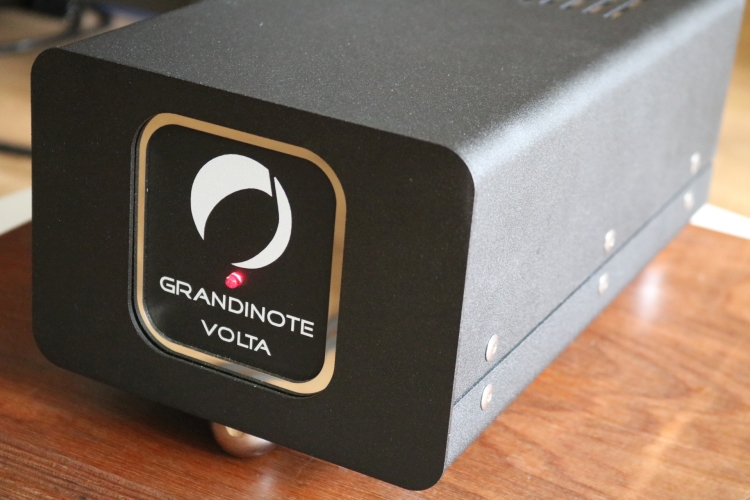
Warming Up
As is often the case, the Volta needs some time to warm up and to sound its best. However, just like the Shinai amplifier, it sounded impressive right from the moment I switched it on. What I noted initially is that the Volta has a full, powerful, dynamic, and spacious delivery, that becomes warmer, more deeply saturated, and a little bit more relaxed, as the unit warms up. After about an hour, I noted no more differences. Given the unit’s relatively low power consumption, I would advise to simply always leave it switched on.
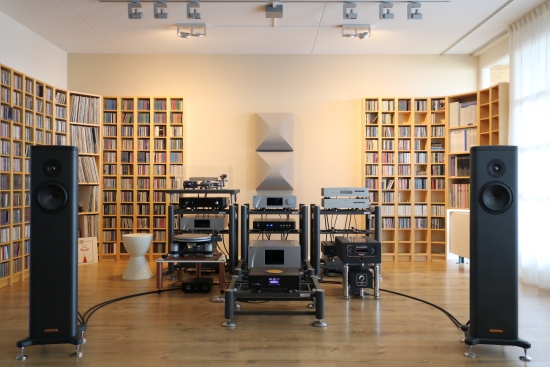
Review Context
In the review system, I will be using the Volta on the Artesania Modular Floor Platform as well as on the dedicated Grandinote Combo Stand, connected with Driade Flow Link Reference 808 and AudioQuest Fire RCA cables to the Audio-GD Master 1 analog preamp, Jorma Trinity speaker cables, and a Belden 19364 power cable with Bals schuko and Oyaide C-004 IEC connectors, with the CH Precision A1.5 power amp driving the Magico S1 MkII speakers.
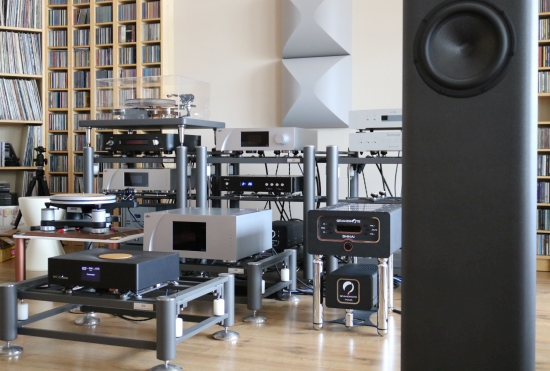
Listening – WiFi and Ethernet
As control software for UPnP connections, Grandinote recommends MConnect for iOS or BubbleUPnP for Android. I have and use both and they are indeed excellent choices. Another great option for Android devices is HiFi-Cast. For Roon, obviously, all the Roon-compatible control points will work, such as phones, tablets, and computers, either on Windows, Android, or macOS.
Unica app
At the moment of review, it wasn’t yet released but Grandinote is working on their own app called Unica which allows control of KODI and MPD, and by extension, I suppose anything UPnP. Highlights include compatibility with Tidal, Qobuz, Spotify, Deezer, YouTube, Netflix, and many to come, immediate search results, the ability to mount a NAS, the availability of lots of information about the artists in your media library, that can be viewed even with the HOST turned off.
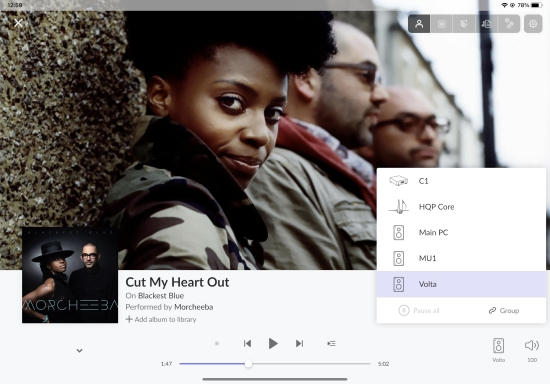
Roon Ready
My listening started with the Grimm MU1, serving Roon via the RAAT protocol to the Volta over Ethernet. Although the Volta also does UPnP, I believe Roon is what most people will use it with. As I quickly found, much like the Shinai amplifier, the Volta impresses with a rare mix of virtues. It sounds BIG in the broadest sense of the word. The sound is propulsive, dynamic, and incredibly lively, and it’s all served in a soundstage that is both wide and deep and hugely engulfing, if not especially precise in terms of image specificity and layering. What’s rare is that these virtues are combined with smoothness, liquidity and deep tonal saturation. Even rarer is that the Volta also sounds wide open and intricately detailed yet never analytical. It achieves this through a presentation that is spritely, lively, and articulate in the midrange and treble, and full and smooth and even a little round in the bass. A term often used to describe this kind of bass behavior is lush. However, the Volta’s direct liveliness and attack make that I would rather label it as spritely and engaging, not necessarily as lush overall.
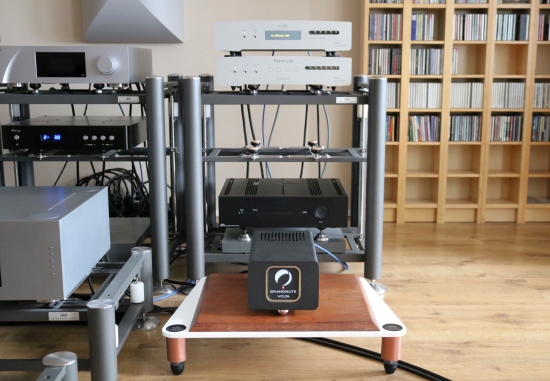
To more precisely map the Volta’s sound, I made a direct comparison with the Aqua LinQ Network Player and Formula xHD DAC, at ~20.000 euro, a comparatively costly combo that is also made in Grandinote’s home country Italy. The Grimm MU1 was retained as a server but now using the HQPlayer NAA protocol rather than Roon RAAT, because the LinQ does not support Roon directly.
Unexpectedly, this switch took me some time to get to grips with, for the Aqua combo now sounded comparatively small, dull and dry. Knowing that the Aquas are both incredibly neutral and not dull in and of themselves, apparently, without having noticed it just yet, the Volta must have quite a voluminous and rich sound. Further swapping back and forth unveiled what was happening. As I noted, the Volta’s bass is on the lush and voluptuous side, but not in a “hewn from granite” kind of way. Rather, it sounds full and energetic but in a slightly sweet and rounded manner that actually reminds me of tube products. Likewise, the soundstage is larger than I normally hear with most streaming and DAC products, and that includes the CH C1 DAC. Of course, I imagine, this is precisely what the designer was aiming for. After all, the intention was to combine the strengths of tube- and transistor designs.
Just as I am used to from many tube products, the Volta makes it easy to get sucked into the music and enjoy it, whilst making one simply forget to ponder any audiophile technicalities. And, as I would find, it has this effect on everyone who hears it.
As I went back and forth between the LinQ and the Volta, I noticed that my preference depended on the style of music that I played. For instance, where the Volta would invariably be utterly seductive with strings, vocals, and the overall ambiance, the LinQ and Formula xHD impressed me more when playing rhythm-driven music or whenever the highest precision was called for.
As mentioned, the LinQ and Formula xHD manage higher precision in the bass, and they also sound more neutral and linear. Strictly speaking, the Aqua combo is closer to the audiophile ideal, as well as my own ideal. And that’s only fair, given the combo’s much higher price of admission. However, musically speaking, a hugely compelling argument can certainly be made for the Volta. Much of it depends on how strict a listener is. Having heard so many streamers and DACs, I think it’s fair to say that the Volta romanticizes the sound to some extent and I don’t think I’m taking things out of context by stating that perhaps it also has a slightly larger-than-life sound, but you have to ask yourself, is that a problem? To answer that question, let’s return to my friend Niels and his system.
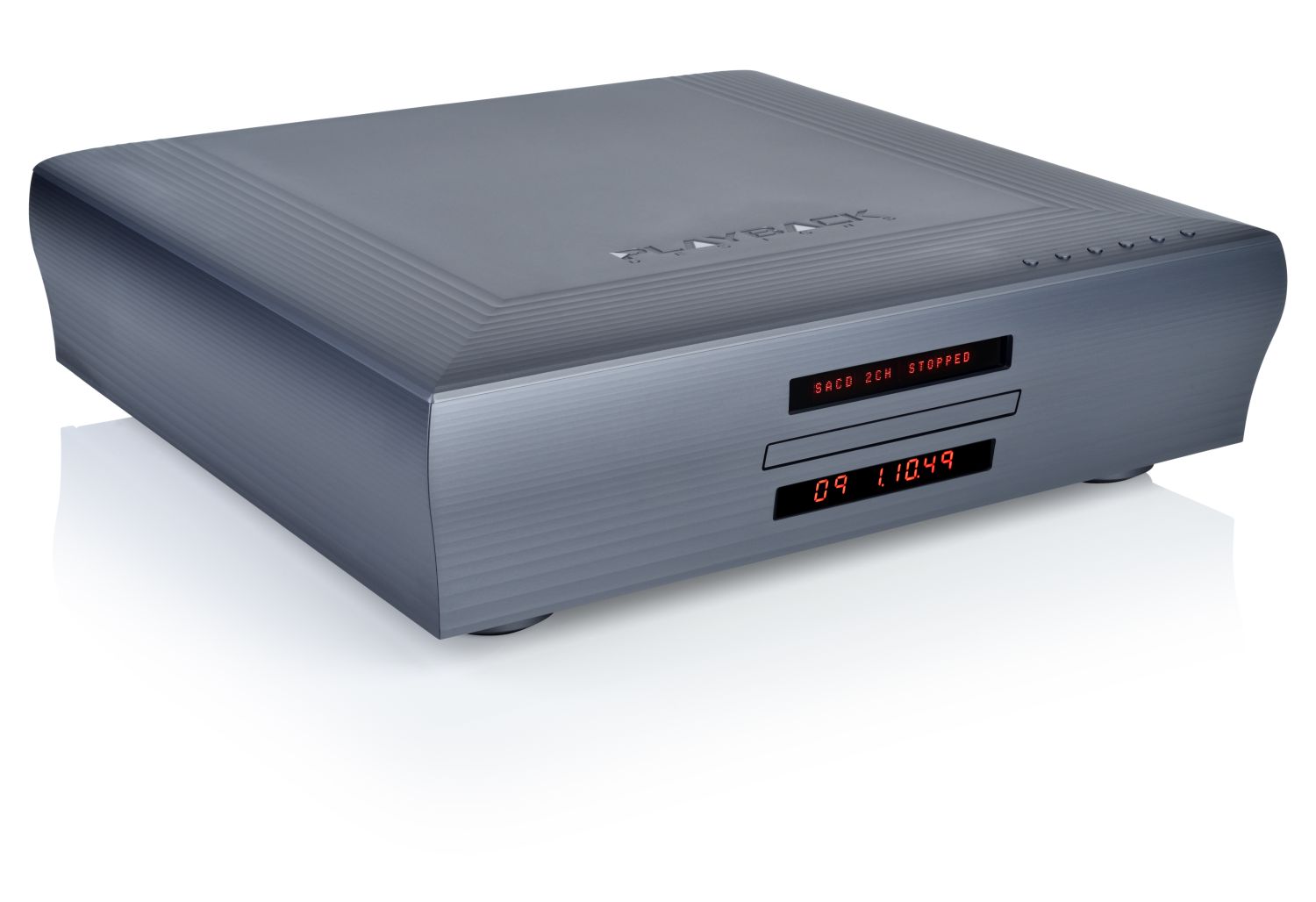







Hi Christiaan,
did you directly compare the Volta to the Lejonklou Källa?
Both are very interesting streamers with an in-built DAC, without digital outputs and in a similar price range.
Thanks and best regards
Matt
Hi Matt, yes, I did. They are very different. I will explain in the upcoming Kalla review.
When will it be online?
Thanks
Matt
It’s either the first or the next review coming up.
Hi Christiaan,
I have positively noted that you are aware of Lejonklou’s recommendation for using the supplied stock power cable and the component’s own feet.
Thank you.
Matt
(from Spain) I am new in this world but I love the way you explain in your reviews.
I ask you: in the review of grandinote sinai and in volta review you said that you were going to write a separate review about the celio phono. Later you didn´t. Why you did not it? Celio was no good enough for you?
Nice to hear, Carlos. Due to circumstances, the Volta review did not materialize. Somethings, things don’t go as planned.
thanks for your fast answer. As I said before, I am new and I am reading the best magazines and your reviews for me the best with large diference from the others
Much appreciated, Carlos!
What I can say is that the Celio will play to the strengths of the Shinai. If you are looking for smoothness and relaxed flow, it will deliver. But if in doubt, why not just try and get this phono preamp for a home demo? It’s very personal anyway, and that way, you’ll know for sure.
Believe me when I tell you that I am blind in this matter. It will be my first sound sistem and I am not one of those who change. That’s why more than trying at home I have to trust others like you. I’m not a good movie director, but I’m a great movie producer. I recruit the right people and give them the freedom to advise me. This is what I do with you, I read your reviews and compare them with those of others and above all I read you between the lines looking for those oversights in which one is tremendously sincere almost without wanting to. There I squeeze the review like an orange at breakfast and draw my conclusions. I take note of the test at home